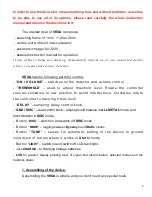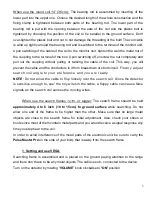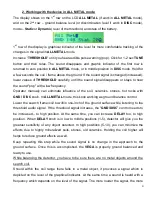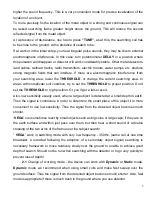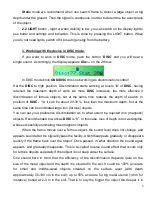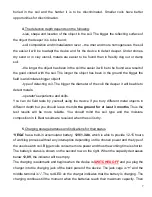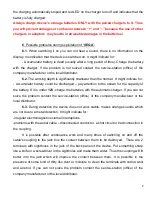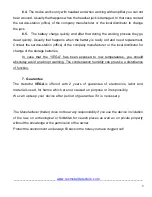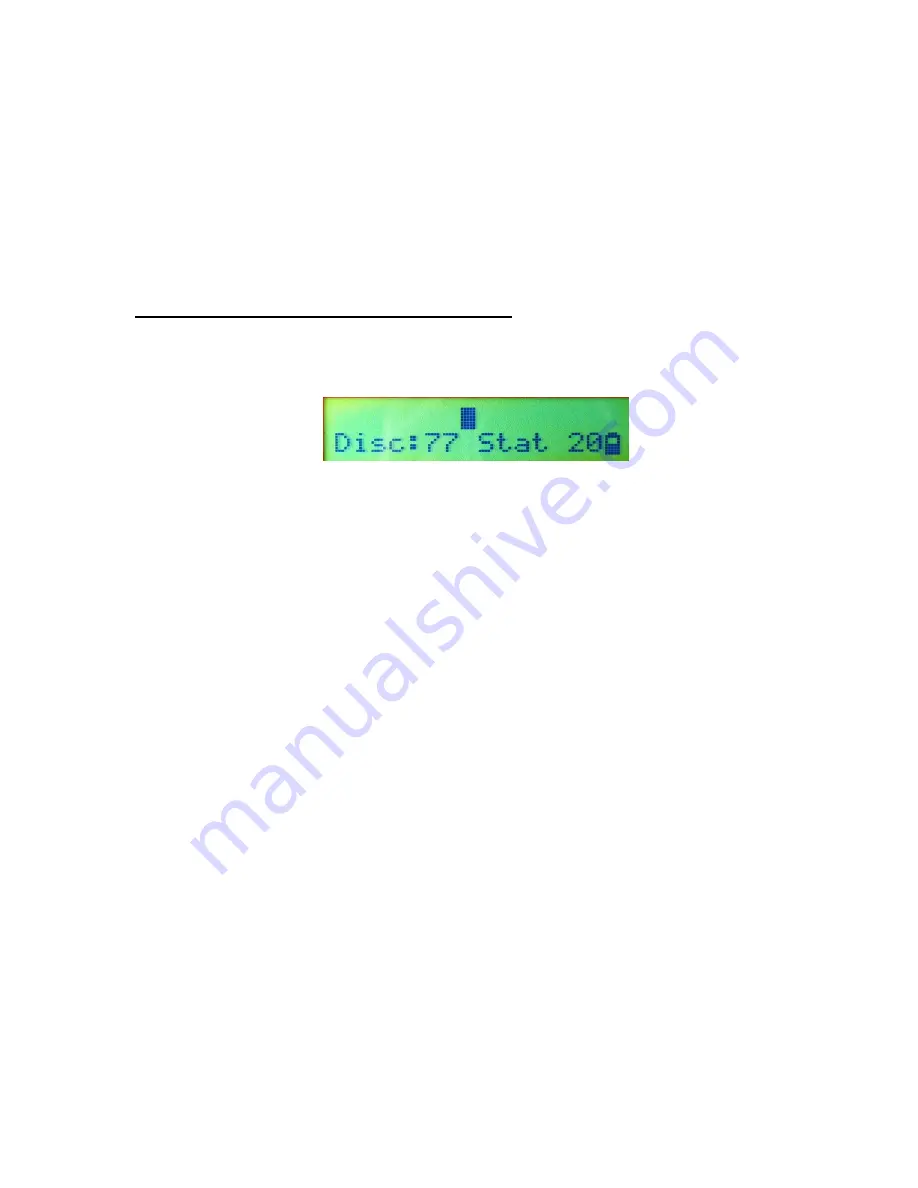
6
Static
mode we recommend when use search frame to detect a large object at big
depth under the ground. Then the signal is continuous in order to determine the exact place
of the object.
2.2
LIGHT
button - night or when visibility is low, you can switch on the display light to
see better and settings and indication. This is done by pressing the LIGHT button. When
you do not need lights, switch off it to saving energy from the battery.
3
.
Working with the device in DISC mode
:
If you want to work in
DISC
mode, push the butto
n “
DISC
” and you will hear a
single sound. Accordingly, the display appears
Disc:--
on the 2th row.
In DISC mode knob
GND/DISC
this knob working as discrimination control!
Set the
DISC
to high position. Discrimination starts working at levels
“
6
” of
DISC
, having
retained the maximum depth of work. As more
DISC
increases, the more effective it
discrimination of ferrous objects, but at the same time reduces the depth of search. In
position of
DISC
- 10, it can be about 20-30 % less than the maximum depth, but at the
same time can be eliminated large iron (ferrous) objects.
You can set your preference discrimination as to what extent be rejected iron (magnetic)
objects. Recommended to work as
DISC
is
“8”. In this case, loss of depth is not as tangible,
while successfully eliminating most magnetic objects.
When the frame moves over a ferrous object, the sound level does not change, and
appears sound after the signal bypass the facility, which disappears gradually or disappears
quickly if the frame back over the object. Once passed, in what direction the sound again
appears, and gradually disappears. This is so-called reverse sound effect that occurs only
for ferrous objects especially if the subject is not deep under the surface.
One should bare in mind that the efficiency of the discrimination depends quite on the
size of the metal object and the depth it is situated in the soil. It could be 100% accurate
for small and middle-sized objects situated on the surface layer (with depth
approximately 50-100 cm in the soil), up to 50% accurate for big metal utensil (1x1m for
instance) buried at 2-3 m in the soil. That is to say the bigger the object the deeper it is


